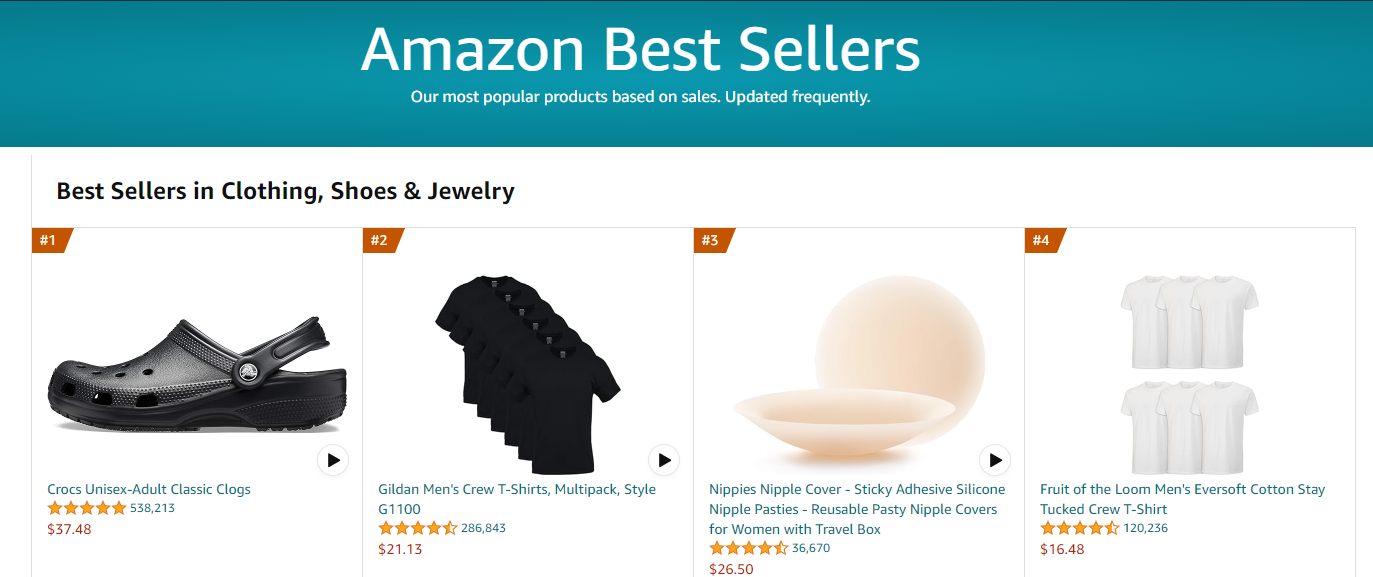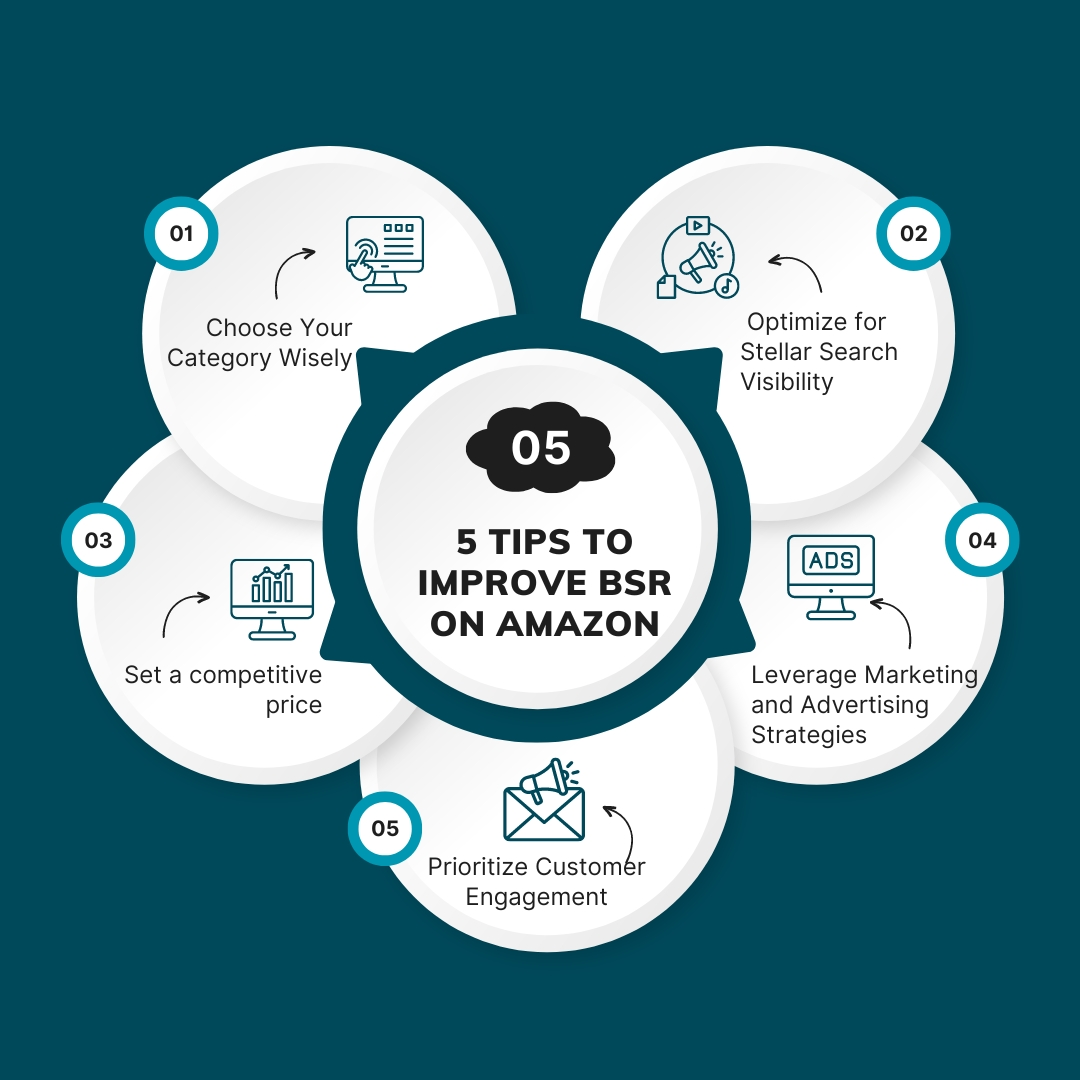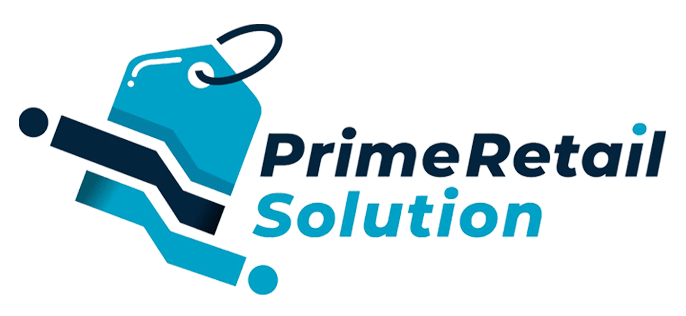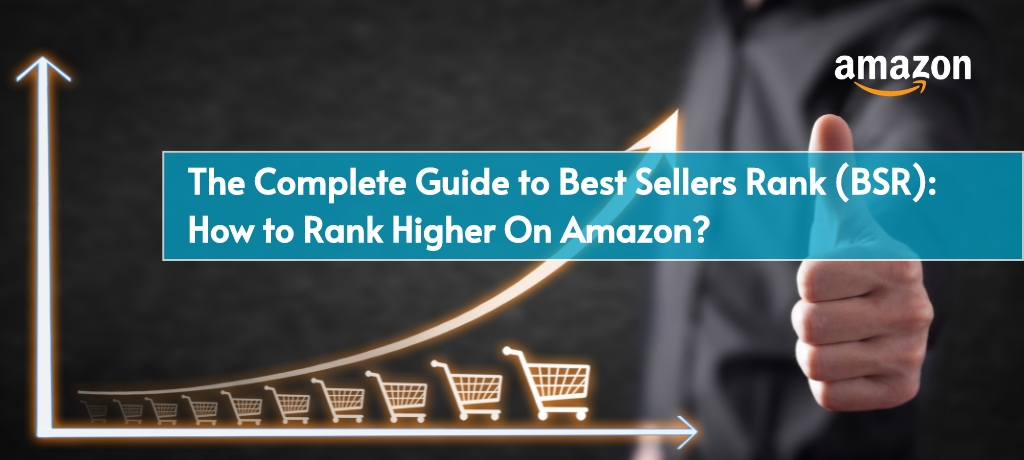Amazon
The Complete Guide to Best Sellers Rank (BSR): How to Rank Higher On Amazon?
With small- and medium-sized companies selling almost 4,000 products every minute in the marketplace, selling on Amazon is no simple task. Amazon developed the Best Seller Rank (BSR) statistic to let sellers track the performance of their products in their category and subcategory.
Best Seller Rank is given to most items that have been sold on Amazon. A good ranking, as its name implies, means that a product sells well and is therefore more enticing to consumers. To increase their brand awareness and revenue, Amazon sellers therefore strive for a high BSR.
The following article will help you monitor the rank and suggest expert tips to ensure your brand achieves the lowest (top 10) best sellers rank in the respective product category.
What is Amazon Best Seller Rank (BSR)?
The way BSR operates on Amazon and how to leverage it to increase online sales are explained here.
On the product page of an item, a metric called Amazon Best Sellers Rank (BSR) shows how well it is selling in relation to other products in the same category on the Amazon site. Based on BSR scores, which are updated multiple times a day, Amazon’s Best Sellers list displays the best-selling items within highlighted categories almost in real time.
For instance:
#1 sales rank: Most people buy your products more than other competitors in the same category.
#2 sales rank: With only one product selling better, yours is the second-best seller.
#3 sales rank: Two goods are selling better than yours, making it the third best-selling product.
#50 sales rank: Out of all the products, 49 are selling better than yours.

In the following sections we will go over how to monitor BSR and monitor changes over time to assess sales performance, choose what to sell, and increase online sales.
How Amazon’s Algorithm Calculates BSR?
The Amazon Best Sellers Rank (BSR) is a valuable tool for both sellers and shoppers. It acts as a popularity indicator, reflecting how well a product performs compared to others within its specific category on Amazon.
Imagine a product page – you’ll find the BSR listed there. This number tells you how that item stacks up against its competition. Lower BSRs signify stronger sales performance. For instance, a satin sheet set with a BSR of #4 in the Home & Kitchen category is the fourth best-selling product among actively listed items in that category, showcasing its current popularity with customers.
Amazon’s Best Sellers list dynamically showcases the top-selling products within featured categories, with updates happening several times a day. These updates are driven by BSR scores, which themselves fluctuate based on a product’s sales performance. By strategically utilizing BSR, sellers can gain valuable insights to optimize their listings and potentially boost their sales on the platform.
Also, different Amazon marketplace may display different ranking information. For instance, a product that is ranked #1 in the US can be ranked #23 in the UK or Japan Amazon marketplaces.
What Is The Difference Between Best Sellers Rank and Search Ranking?
When searching for products on Amazon, you encounter two distinct ranking systems: search ranking and Best Seller Rank (BSR).

- Search Ranking: This determines a product’s position in search results when a user enters specific keywords or phrases. You can improve search ranking by optimizing product listings with relevant keywords and SEO best practices.
- Best Seller Rank (BSR): This reflects a product’s position within its designated category based on its sales performance. Products with a lower BSR appear on the Amazon Best Sellers list, potentially increasing their visibility.
Key Factors To Monitor To Maintain BSR
While the exact formula behind Amazon’s sales rank remains a secret, sellers have identified several crucial factors influencing product visibility. Understanding these factors empowers you to create and maintain high-ranking listings, ultimately boosting your sales.
1. Category Selection:
Amazon assigns sales rank based on your chosen product category. Categories like “Camera & Photo” or “Books” (with millions of listings) naturally present a more competitive opportunity for achieving a lower sales rank (indicating higher sales volume). Conversely, less saturated categories offer a better chance of becoming a “Best Seller.”
2. Product Listing Optimization (SEO):
Similar to general search engines, Amazon’s algorithm prioritizes SEO optimized listings. By incorporating relevant keywords in your title, description, and features, brands can make their products more discoverable to potential buyers entering queries relevant to your product. Remember, if shoppers can’t find your product, they can’t buy it. Here are some optimization tips:
- Accurate Category Selection: Ensure your product is placed in the most relevant category.
- Compelling Product Images: High-quality visuals are essential for attracting attention.
- Benefit-Driven Features: Highlight the advantages your product offers.
- Informative Descriptions: Include warranty details, care instructions, and dimensions.
- Competitive Pricing: Offer attractive prices to stand out.
- Keyword Integration: Strategically incorporate keywords describing your product.
For faster optimization, consider professional Amazon listing optimization services.
3. Recent Sales Trend:
Recent sales surges directly impact your sales rank. However, maintaining a high rank requires consistent (or even exceeding) sales performance. Strategies for optimizing your Amazon sales rank often focus on generating sustained sales volume.
4. Products’ Seasonality:
Seasonal products experience fluctuations in sales rank. For example, surfboards or other swimming gear might see a temporary increase in sales rank during the off-season due to reduced demand and fewer competitors actively selling. However, once the peak season arrives, competition intensifies, and sales rank may normalize or even decrease as demand rises.
5. Product’s Historical Sales Pattern:
Your historical sales data plays a role in shaping your sales rank. Amazon analyzes your past orders and sales frequency to assess trends and potential fluctuations. Inconsistent sales can lead to an unpredictable rank. Focus on driving consistent sales through listing optimization and consider advertising your products on Amazon.
6. Daily Sales Performance:
Daily sales figures directly contribute to your sales rank. While occasional sales dips on weekends or weekdays might not cause immediate rank changes, sustained sales decreases over several days (typically 4-5 days) can negatively impact your position.
How To Improve Best Sellers Rank On Amazon?
Now that you understand the key factors influencing Amazon’s sales rank, here are some valuable insights to develop strategies for achieving a top spot in Amazon’s Best Sellers and maximizing your sales potential.
Since BSR (Best Seller Rank) directly correlates with sales volume, increasing sales is the key to achieving a stellar BSR score. Here are five effective tactics to help you climb the Amazon sales charts:

1. Choose Your Category Wisely:
Amazon’s BSR is category-specific. This means your product’s ranking fluctuates relative to other products within the same category. Selecting the most relevant and accurate category is crucial.
To make an informed decision, explore the “Best Sellers” list and familiarize yourself with category and subcategory options. If you offer product variations, ensure all ASINs (Amazon Standard Identification Numbers – unique 10-digit product identifiers) are placed within the same category for better ranking potential.
2. Optimize for Stellar Search Visibility:
Enhance your product’s organic search visibility by optimizing various listing elements. This includes crafting compelling product titles, using high-quality product photos, and writing detailed product descriptions that highlight key features and benefits.
Here are some optimization tools and techniques to consider:
- Amazon SEO: Target specific keywords to improve your product’s ranking in organic search results.
- A/B Testing: Run experiments to compare different versions of your product title, photo, or other elements to see which drives more sales.
- A+ Content: Utilize this feature to create engaging visuals, informative content, and incorporate your unique branding to enhance product listings.
3. Price Competitively:
Conduct thorough pricing research to determine the price point that maximizes sales. You can experiment with different price ranges or use Amazon’s Automate Pricing tool to dynamically adjust prices based on market trends.
4. Leverage Marketing and Advertising Strategies:
Boost your sales by deploying various e-commerce marketing tactics. Explore social media marketing, content creation (blogging), affiliate marketing, or consider cost-per-click (CPC) advertising to drive traffic and conversions. Additionally, experiment with subscription boxes, product bundles, and other promotional strategies to attract more customers. Don’t forget to explore advertising options specifically offered by Amazon for sellers.
5. Prioritize Customer Engagement:
Building strong customer relationships is vital for success on Amazon. Ensure a smooth shopping experience by promptly answering customer queries, providing excellent follow-up after purchases, and implementing best practices for online sales. Positive customer reviews and repeat purchases will ultimately improve your BSR.
Conclusion:
Understanding BSR and implementing effective strategies are crucial for achieving top rankings and maximizing sales on Amazon. However, navigating the complexities of Amazon’s ever-evolving marketplace can be challenging.
Prime Retail Solution, your trusted e-commerce growth partner, empowers brands to lead their competition on Amazon with it’s comprehensive 3P marketplace solutions:
- Brand Protection: Safeguard your brand reputation and prevent unauthorized sellers from diluting your market presence.
- Advertising Management: Leverage data-driven strategies to launch high-performing Amazon Advertising campaigns and maximize ROI.
- Listing Optimization: Create compelling and SEO-optimized product listings that drive organic traffic and conversions.
- Regular Reporting & Updates: Gain valuable insights into your BSR performance, sales trends, and competitor analysis to make informed decisions.
- Dedicated Account Management: Benefit from expert guidance and ongoing support from a dedicated team of Amazon specialists.
Contact Prime Retail Solution today for a free consultation and discover how our customized strategies can help you achieve a top BSR and propel your brand to success on Amazon.
Share





